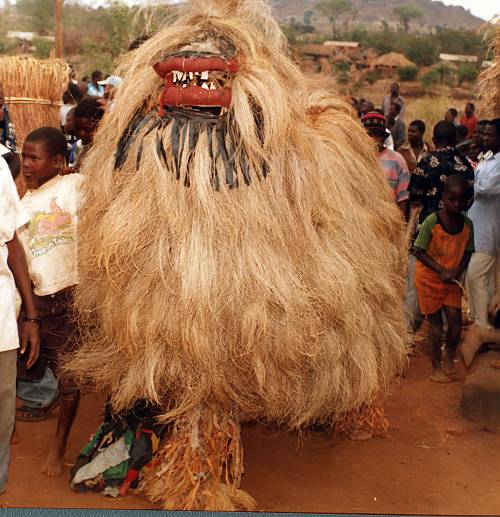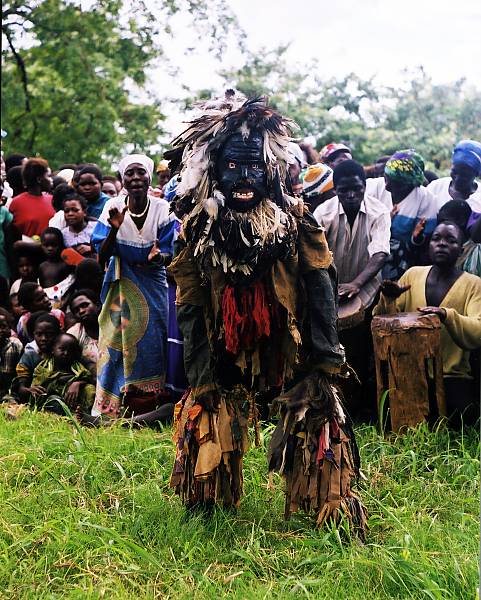Mozambique
There are over 1000 traditional dances in Mozambique, each region, each village has their own traditions and variations of different rhythms and dances.
There can be dances symbolising celebration, war, love or harvesting, however, today variations of the dances are mainly used as an individual expression or to represent the rich Mozambican culture at events.
Many traditional dances are traditionally only danced by women and other only by men even though today many dances are dance by all humans.
Mozambican dances also show that what is seen as typically masculine or feminine can differ depending on the region and tradition.
What all dances have in common is that rhythm comes first, movements come second.
In the Bantu languages such as Ronga and Changana, spoken in Southern Mozambique, the word “ngoma” could mean either music, dance, drum or song; in the end it is all expressions of the same thing. Each has a different story, emotion, expression and tradition.
Here some dances:
Xigubo, Mapiko, Marrabenta, Ngalanga, Makway, Nganda, Limbondo, Xisaizana, Muthongoio,Semba, Niketche, Makwaya, Makwayela, Zorre, Tufu, Utsi, Tema Tema, Chingomana & Maseve.The Official “National dance of Mozambique” is “Tufo“.
Dance is at the heart of the popular culture and often, men play instruments and women sing in chorus.
Mozambique has developed a national strategy for the safeguarding of its living heritage. Following eight months of conducting a pilot inventory in the Province of Manica in Central Mozambique, the national institute for socio-cultural research, Arquivo do Património Cultural
(ARPAC), in cooperation with UNESCO organized a closing workshop from 27 to 31 October 2014. The workshop in Manica and Maputo highlights how inventories of intangible cultural heritage are a key step for further safeguarding measures.
Taking stock of the results of the pilot inventory, the workshop marks the end of a sequence of country-based training activities in Mozambique and will permit both the local and the provincial levels in Manica and Maputo to contribute to the development of a national strategy for the promotion and safeguarding of Mozambique’s intangible cultural heritage.
Over eighty members of the community of Chinhambudzi have collaborated with ARPAC to collect data, map, describe and categorize their intangible cultural heritage. .
Mozambique is the first Portuguese speaking African (PALOP) country to have accomplished the inventory exercise, and Mozambican trainers will have the opportunity to co-facilitate workshops in other PALOP countries, namely Sao Tome and Principe where preparations are already underway for upcoming workshops.
Sources:
https://masx.org/what-is-afro-swing/traditional-mozambican-dance/
Jacques Erwan in L’écumeur de mémoire: https://www.jacques-erwan.fr/?page_id=801)
UNESCO
https://ich.unesco.org/en/news/mozambique-to-develop-a-national-strategy-for-the-safeguarding-of-
its-living-heritage-00096
List Of Dances
Gule Wamkulu
Gule Wamkulu was a secret cult, involving a ritual dance practiced among the Chewa in Malawi,Zambia, and Mozambique. It was performed by members of the Nyau brotherhood, a secret society of initiated men. Within the Chewa’s traditional matrilineal society, where married men played a rather marginal role, the Nyau offered a means to establish a counterweight and solidarity among men of various villages. Nyau members still are responsible for the initiation of young men into adulthood, and for the performance of the Gule Wamkulu at the end of the initiation procedure, celebrating the young men’s integration into adult society.
Gule Wamkulu is performed in the season following the July harvest, but it can also be seen at weddings, funerals, and the installation or the death of a chief. On these occasions, the Nyau dancers wear costumes and masks made of wood and straw, representing a great variety of characters, such as wild animals, spirits of the dead, slave traders as well as more recent figures such as the honda or the helicopter. Each of these figures plays a particular, often evil, character
expressing a form of isbehavior, teaching the audience moral and social values. These figuresperform dances with extraordinary energy, entertaining and scaring the audience as representatives of the world of the spirits and the dead.
Gule Wamkulu dates back to the great Chewa Empire of the seventeenth century. Despite the efforts of Christian missionaries to ban this practice, it managed to survive under British colonial rule by adopting some aspects of Christianity. As a consequence, Chewa men tend to be members of a Christian church as well as a Nyau society. However, Gule Wamkulu performances are gradually losing their original function and meaning by being reduced to ntertainment for tourists and for political purpose.
Inscribed in 2008 on the Representative List of the Intangible Cultural Heritage of
Humanity (originally proclaimed in 2005)
AUTHOR : UNESCO
Reference : Unesco’s Website “Read”
MOZAMBIQUE
Malawi, Zambia, Zimbabwe
Region:
Ethnic group:
Nyau, Chewa
Mapiko
Ingoma Ya Mapiko
The Mapiko dance is a celebratory dance practiced by the Makonde people of
Mozambique. As part of the traditional rite of passage from puberty to adulthood, the dance is performed in an enclosure, usually under mango trees, with dancers, musicians and the public coming together to celebrate the initiation rite.
The dance may also be performed for the funeral of a group member or for entertainment. It is a theatrical performance involving several dancers who perform alone or as a group, wearing masks that represent animals or people. They are accompanied by drums and a choir of women and men standing opposite each other. In between the dances, the choir also dances and sings provocative songs, challenging and provoking the masked men and people from neighbouring villages.
The Mapiko dance is transmitted during initiation rites. It symbolizes human spirit, harmony with the cosmos, and the fight between good and evil, and is viewed as a means of overcoming fear. It also seeks to restore a balance between the masculine and the feminine. For the practising communities, mapiko is a means of transmitting ancestral values, beliefs and customs and of helping youth familiarize themselves with the transformations of their bodies as they reach maturity.
Inscribed in 2023 (18.COM) on the List of Intangible Cultural Heritage in Need of Urgent Safeguarding
AUTHOR : UNESCO
Reference : Unesco’s Website “Read”
MOZAMBIQUE TANZANIA
Region:
North Mozambique
South Tanzania
Ethnic group: Makonde
Tufu

History
The origins of tufo are unclear,[5] although on the Island of Mozambique, legend has it that the dance began at the time when the prophet Muhammad migrated to Medina.[6] He was welcomed by his followers with songs and dances praising Allah, accompanied by tambourines. Since the prophet approved of these dances, they continued to be performed at religious festivals.[6]
Tufo probably arrived in Mozambique in the 1930s, brought by a tradesman from Kilwa called Yussuf. [5][6] The name probably derives from an Arabic name for the tambourines used in the dance, ad-duff.[6] This word became adufe or adufo in Portuguese, and then tufo.[6]
The dance has also been heavily influenced by the matrilineal Makhuwa culture.[6] Despite its Muslim origins, tufo has spread beyond the communities and context of Islam.[5] Although still performed at religious feasts, tufo songs may also contain social or political themes.[6]
Tufu, a traditional dance in Northern Mozambique, is the Official “National dance of Mozambique”.The dance is performed by groups of women and is found in Maputo, the provinces of CaboDelgado and Nampula and the Island of Mozambique.
Of Arab origin, the dance is performed to celebrate Islamic festivals and holidays.
Women come together to perform Tufo wearing capulanas and bright-coloured shirts. Their faces are covered with mussiro, a type of facial cream used by Macua women. They tie head wraps and use jewellery, necklaces and bracelets for an extravagant finishing touch.
Tufo had an Arab origin but took root on the east coast of Mozambique, particularly in Nampula and Cabo Delgado. This cultural manifestation will be considered for intangible cultural heritage of humanity, but little is known at this stage.
Performance
Historically tufo was performed by both male and female dancers but now men usually only dance on rare occasions.[6] Tufo dance groups comprise 15–20 women and are accompanied by four men or women on flat tambourine-like drums.[6] All of the dancers sing although there are usually lead singers.[6] Traditionally, tufo dancers danced while kneeling down, rhythmically moving the top halves of their bodies. [5][6] More recently tufo choreography has evolved such dancers may stand and move their whole bodies about.[6]
Tufo songs are transmitted orally and may be composed by one of the dancer’s or by the group’s poet.[6] They are usually in the Emakhuwa language but may also be in Arabic or Portuguese. [6] The dancers must wear matching scarves and capulanas, which are a kind of sarong made from brightly coloured printed cloth.[6] Each dance requires a new capulana to be worn.
Sources:
5) Sheldon, Kathleen E. (2005). Historical dictionary of women in Sub-Saharan Africa. Scarecrow Press.p. 247. ISBN 0-8108-5331-0.
6) Arnfred, Singe (2005). “Tufo Dancing: Muslim Women’s Culture in Northern Mozambique”. In Lusotopie, n°11,2004. Médias pouvoir et identités. pp. 39-65 Read
Buala read
MOZAMBIQUE
Region:
Maputo, provinces of Cabo Delgado and Nampula, Island of Mozambique
Ethnic group:



